A Guide to Different Types of Butterflies
Butterflies are some of the most beautiful creatures in the world. They belong to a large group of insects called Lepidoptera. This group includes both butterflies and moths. Butterflies are harmless, and they cannot bite or sting; some species can damage plants in your garden, but it’s rare. Their appearance is filled with mystery, symbolism, and meaning.
Although there are over 17,000 species, 5-Minute Crafts has prepared this guide to help you identify some butterflies from different parts of the world.
1. Asia
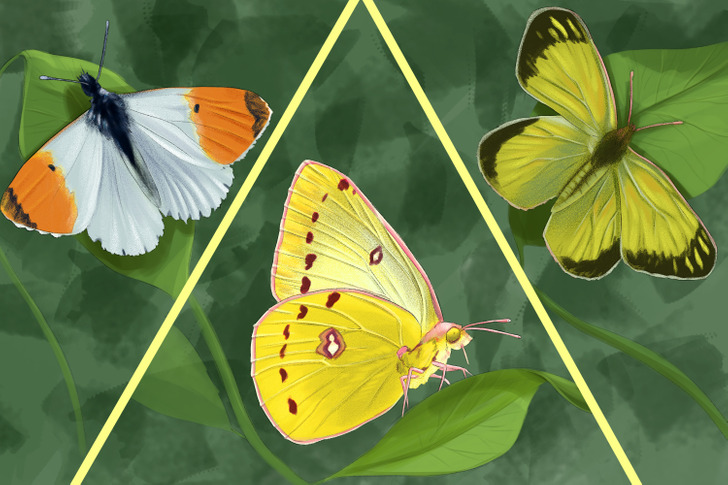
- The Anthocharis cardamines is usually white and orange. Males have wings with an orange pigmentation and a black dot. The hindwings of all species are mottled with green. The green color is actually an illusion created by a fine peppering of yellow and black scales.
- The Colias erate amdensis is a yellow butterfly with a broad, unspotted, blackish band on the forewing. The band is yellow speckled on the anterior side. It has a large black spot hindwing with a wide blackish crenulated band and a large orange-yellow spot.
- The Colias marcopolo is commonly known as the clouded yellow. The butterfly is a pale, sulfur yellow-colored with a gray-black margin and large yellow spots on the hindwing but without a black middle spot on the forewing. The female has a yolk color both on the forewings and hindwings.
2. Africa
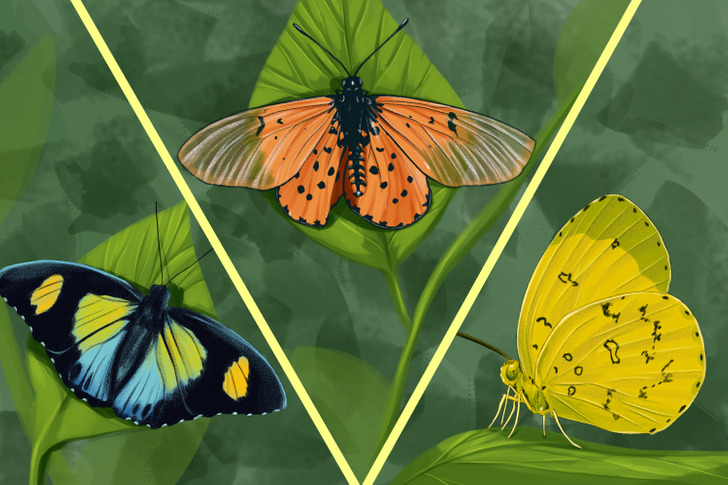
- The Euphaedra janetta is a species of butterflies with basal areas of the wings and hindwings colored with metallic blue, green, orange, or red. The undersides are usually some shade of yellow or green, marked with black spots and stripes. Both males and females fly close to the ground. They’re attracted to fallen fruits.
- The Acraea horta is commonly known as the garden acraea. Its wings are orange. The forewing has absent black dots or just one dot in the cell. The spots around the margin in the male butterflies are small, elongated, and separated from the ground color. The forewing is almost entirely hyaline in females, and the hindwing, under light, is yellow to grey-yellow.
- The Eurema hecabe, commonly known as grass yellow, are all pretty small. They have bright yellow wings with black dots outlining them. They also present asymmetrical black figures on the wings. Grass yellows have a habitat of gathering in small groups on patches.
3. North America
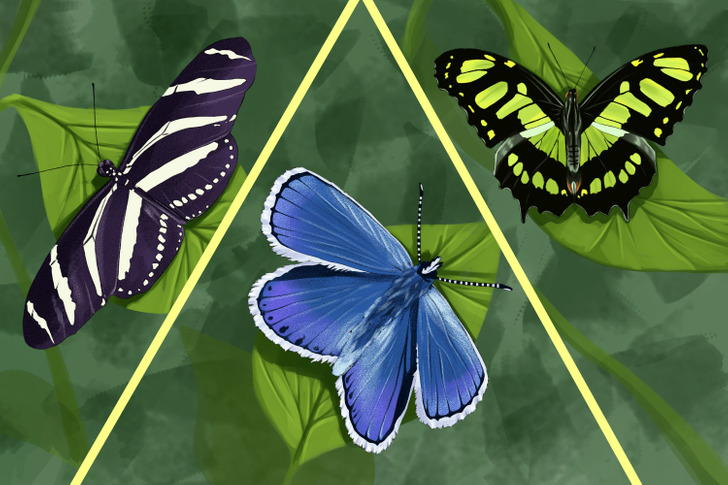
- The Heliconius charithonia is a monomorphic butterfly of medium size with extended wings. The wings are black with white and yellow stripes on the upper side. The pattern is really similar on the bottom side, but instead of stripes, there are dots.
- The Plebejus idas is a large group of butterflies that encompasses about 70 different species. The males are metallic blue. Females can have earthy brown wings with small orange submarginal lunules. The undersides are white with ringed black spots, and the orange submarginal lunules have blue scales.
- The Siproeta stelenes has black wings with yellow-green on the forewings and light brown and olive green on the underside. They are commonly known by the name malachite butterfly, named after the mineral, malachite, with a similar color to the yellow-green butterfly’s wings.
4. South America
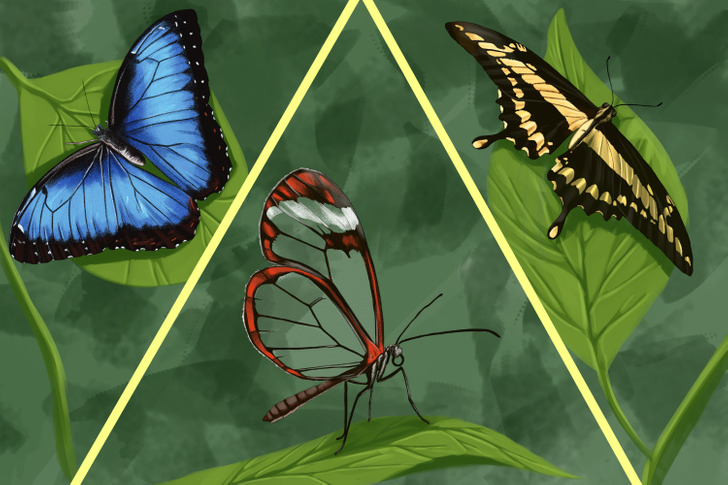
- The Morpho menelaus has dorsal forewings and hindwings that are bright blue-edged with black. The ventral surfaces are brown and they have a slow and floppy flight pattern. Heavy rain can cause physical harm to their wings, so they are known not to appear in the wet season.
- The Greta oto is known as the glasswing butterfly. These butterflies have transparent wings with opaque and dark brown borders tinted with red or orange. Their bodies are dark brown. They are toxic due to consuming Asteraceae flowers. The species uses transparency to hide from predators.
- The Papilio thoas, also known as the king swallowtail, have mostly black-covered wings with chains of yellow. This butterfly species is easily confused with the giant swallowtail, with whom they share similarities in adult stages.
5. Europe
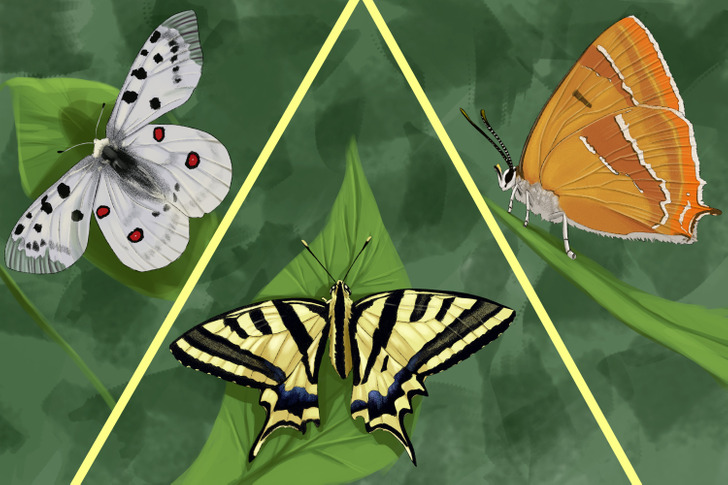
- The Parnassius apollo is a large and beautiful white butterfly decorated with large black eyespots on the forewing. This species requires specific climatic conditions, such as cold winters and sunny summers.
- The Papilio alexanor females are usually larger and have a basal yellow area that is bordered by a broad black band. The bands are continued across the hindwing, bordering it. It flies from April to July in a single year.
- The Thecla betulae females are known for having an orange patch on the upper side of the forewings and golden-orange hindwings. This type of butterfly appears in August.
6. Oceania
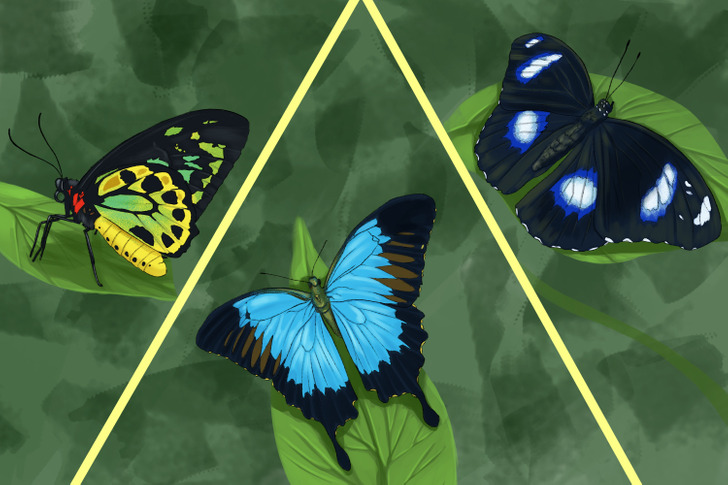
- The Ornithoptera euphorion is the largest butterfly species found in Australia. Males have a predominantly black upper wing with emerald green flashes. The female lacks the green pigment and has a plain black upper wing with white patches. The female is the larger of the 2 sexes.
- The Papilio ulysses has wings that are an iridescent electric blue. The underside of its wings is a more subdued black and brown. The female of the species has little crescents of blue in the back and upside sections of her hindwings. Males only present black.
- The Hypolimnas bolina male butterfly is jet black with 3 prominent spots, 2 on the forewing and one on the hindwing. To us, these appear as white spots fringed with blue-violet, but they actually consist of a white center overlain by bright ultraviolet iridescence. The wings have numerous smaller white spots.
Of all the continents, Antarctica is the only one that doesn’t have butterflies. Which butterfly is the most common in your country?
Share This Article